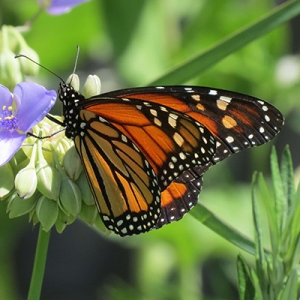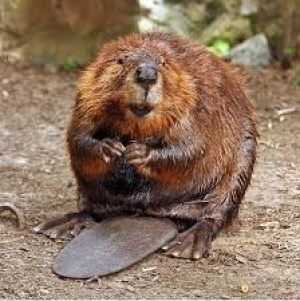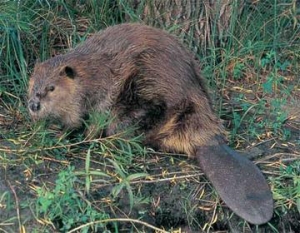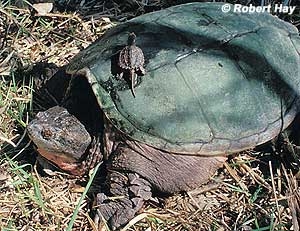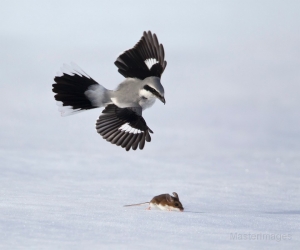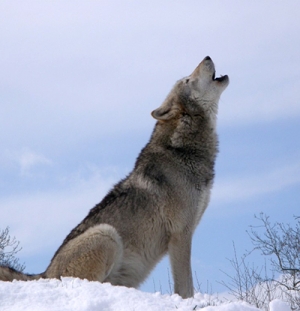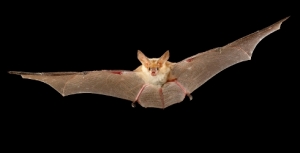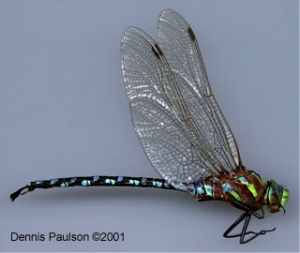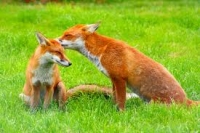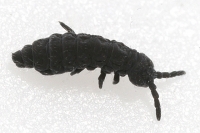

Jennifer Callaghan
Jennifer came to Wisconsin later in life, but has fully embraced the great state of Wisconsin as home. Her first career was as a professional ballet dancer, but a lifelong passion for nature and animals led her to a second career in environmental biology. She loves to learn new things and share her love of nature with others. In her free time she likes to travel and stay active with her awesome husband and sweet little dogs.
Cops and Larvas
The thing I enjoy most about working at the Urban Ecology Center is the occasional unforgettable experience I get to share with volunteers. They don’t happen every day, but sometimes Mother Nature waves her wand at a precise second and a really special moment is created. I’ve seen volunteers cry in reverence to close natural experiences and I’ve experienced the pure magic of nature more times than should probably be allowed. But last week a trio of beat cops shared with me a moment that was surely conjured by the powerful mother herself.
Native Animal of the Month: Beaver (Castor canadensis) Part 2
By now you have probably heard about the Riverside Park Beaver. He’s been chewing down Milwaukee River Greenway trees since the summer of 2014, has been featured on local news segments, has been written about in social media and blog articles, and even became the star of our recent Earth Month grant-matching campaign. But, how much do you really know about this busy beaver? You might be surprised to learn that this species is much more complex than one might think.
Native Animal of the Month: Beaver (Castor canadensis)
I have a confession. A part of me enjoyed when the Riverside Park beaver was a secret. I liked sneaking through the park examining tree trunks along the river for signs of beaver chewing. I enjoyed watching the progress of the chew on the large cottonwood that first revealed signs of the beaver. I enjoyed sharing the location of the tree with nature-loving volunteers and I entertained myself by photographing two of those volunteers with the last name "Beaver" kneeling next to the tree pretending to gnaw at the bark.
Native Animal of the Month: Common Snapping Turtle
I once found a frozen snapping turtle in a river. He lay motionless under a sheet of ice still looking very much alive. His long tail and thick neck were unmistakable through the blurry ice. The image served as a reminder of the difficulty of being a wild animal living in a Wisconsin winter: an unfortunate casualty of harsh sub-degree temperatures, unable to find a nourishing morsel when most needed. A short-time after encountering the turtle, I investigated how turtles survive the winter. I was surprised to read that turtles can live motionless under the ice by going into a type of hibernation. Alas, the turtle I had encountered earlier in the winter hadn't been dead, but had been peacefully passing the winter in the unfrozen water just beneath the ice! A slowed heart rate, a drop in body temperature, a winter of no breaths; what a risky and remarkable winter adaptation this creature experiences!
Native Animal of the Month: Northern Shrike
Imagine a fierce predatory bird that deftly picks off mammals and smaller birds. She spends hours of her day in the cold Canadian taiga, battling food scarcity and searching for sustenance. Once her unsuspecting prey is spotted, she swoops mid-air, stunning the prey with a sharp blow to the head and impales it swiftly on a piece of barbed wire. She may do this several times a day, caching her food in preparation for hard times to come. Such a clever and dominant bird, never letting her diminutive size stop her. For even a songbird the size of a robin can prove a formidable warrior.
Native Animal of the Month: Gray Wolf
Of all the creatures in the animal kingdom, perhaps none has inspired so much folklore and legend as the wolf. From the wolf gods of Norse mythology to the recent pairing of werewolves and vampires in popular culture, stories featuring this misunderstood mammal abound. Separate fact from fiction, however, and you’ll discover a fascinating species with an important place in the ecosystem.
Native Animals of the Month: Cave Bats
My mother gave me a deep appreciation for bats. She grew up in Texas, where any bat enthusiast knows, some of the world's most unbelievable bat hibernacula exist. She and her brother had a pet bat named Radar who they found as an orphan. They raised him (as I like to picture in a little matchbox, with tiny bat swaddling) until he grew stronger and older. Unfortunately Radar had an untimely run-in with a neighbor who was positive the bat had rabies. While my mother's memories of Radar faded, her fondness of him never did, and I have my mom to thank for sharing her love of an animal, that in the late-50's was completely uncool to love.
Native Animal of the Month: Lance-tipped Darner
Nature is magnificent. Nature is brutal. Nature is utterly awesome. No creature understands this better than the dragonfly. Dragonflies live their lives fast and furious; as fearsome carnivores, as creatures on a determined mission living on borrowed time and as inspiration for art. What must it be like to live such a life?
Native Animal of the Month - Red Fox
My favorite Wes Anderson film, hands-down, is "The Fantastic Mr. Fox." George Clooney's portrayal of the cunning and calculating Foxy is hilarious and executed perfectly. The story, based on a children's novel by Roald Dahl, chronicles a family of foxes that are hunted by angry farmers after getting fed-up with Foxy's nightly chicken thievery. The Fox family and many of their close woodland friends (including badgers, opossums, white-footed mice and rabbits) spend a good portion of the film trying to outwit the farmers and fight for their own survival. The biological detail that Anderson pays to all of the animals in the story is quite remarkable. Spoiler alert!! Take note of the correct Latin names that Fox uses for all of his friends as he spouts out directional orders during a flood scene.
Native Animal of the Month - Springtail
Having grown up in Florida, there are some things in the Midwest that are just hard for me to fathom, like the immensity and complexity of Lake Michigan or brutal winters that last from November to April. Another fantastical oddity is a little creature known as the snow flea. When I moved to Wisconsin, I told some friends about bioluminescent critters back home that glow in the dark waters of the Gulf during certain times of the year. They didn't believe me, which is exactly how I felt the first time I heard about snow fleas. I pictured giant fleas hopping heavily on the snow, biting people's ankles as they walked through the woods. I imagined dogs scratching madly as the fleas munched hungrily through their hides. But alas, my imagination was wilder than reality and my ideas about snow fleas were pretty far off.
Copyright © 2023 The Urban Ecology Center

